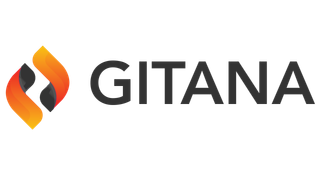Found 400 results for "gitana 4.0 developers app-server authentication providers cas"
The search executed in 0.002 seconds. That's fast.

|
Gitana 4.0 / Content Engine / Multifactor Authentication / Providers / Twilio AuthyDocumentation Reference Enable secure multifactor authentication with Twilio Authy in Cloud CMS. Configure API settings for robust protection. (Gitana 4.0)
Score: 1.2546
|

|
Gitana 3.2 / Guide / Guide / Bulk Import / CSVDocumentation Reference Easily import CSV data into Cloud CMS with our comprehensive bulk import tool. Optimize content integration effortlessly. (Gitana 3.2)
Score: 1.2526
|

|
Gitana 4.0 / Content Engine / Bulk Import / CSVDocumentation Reference Easily import CSV data like 2014 World Cup matches into Cloud CMS using the Bulk Import tool and cloudcms-packager. (Gitana 4.0)
Score: 1.2526
|

|
Gitana 3.2 / Guide / Guide / Docker / Maintenance / UpgradesDocumentation Reference Optimize your Cloud CMS upgrade to version 3.2 with Docker and ElasticSearch 6.2.4 guidelines. (Gitana 3.2)
Score: 1.25
|

|
Gitana 3.2 / Guide / Guide / API KeysDocumentation Reference Access and manage your Cloud CMS API Keys effortlessly. Secure your data with client and user credentials. (Gitana 3.2)
Score: 1.2423
|

|
Gitana 4.0 / Developers / API KeysDocumentation Reference Secure and manage Cloud CMS API Keys to connect apps and protect your data with OAuth authentication. (Gitana 4.0)
Score: 1.2423
|

|
Gitana 4.0 / Forms / API / ValidationDocumentation Reference Effortless form validation with Alpaca: dynamic updates, custom callbacks, & seamless DOM integration. (Gitana 4.0)
Score: 1.2423
|

|
Gitana 3.2 / Guide / Guide / Bulk Import / NodesDocumentation Reference Streamline content import with Cloud CMS Bulk Import tool for easy handling of articles and authors data. (Gitana 3.2)
Score: 1.2134
|

|
Gitana 3.2 / Guide / Guide / Bulk Import / XMLDocumentation Reference Efficiently import XML content into Cloud CMS, perfect for handling soccer league datasets from legacy systems. (Gitana 3.2)
Score: 1.2134
|

|
Gitana 3.2 / Guide / Guide / Application Server / Installation / Standalone InstallationDocumentation Reference Install the Cloud CMS Application Server with ease. Connect using Node.js, Git, and simple setup instructions. (Gitana 3.2)
Score: 1.2134
|

|
Gitana 4.0 / Developers / Application Server / Installation / Standalone InstallationDocumentation Reference Set up a Cloud CMS Application Server using Node.js and Git to manage your content effortlessly. (Gitana 4.0)
Score: 1.2134
|

|
Gitana 4.0 / Content Engine / Bulk Import / NodesDocumentation Reference Optimize content import with Cloud CMS Bulk Import tool and Packager API for structured data files. (Gitana 4.0)
Score: 1.2134
|

|
Gitana 4.0 / Content Engine / Bulk Import / XMLDocumentation Reference Easily import XML content into Cloud CMS using the Bulk Import tool for seamless content management. (Gitana 4.0)
Score: 1.2134
|

|
Gitana 3.2 / Guide / Guide / API / PaginationDocumentation Reference Optimize your data retrieval with Cloud CMS pagination, organizing results into manageable pages for efficient browsing. (Gitana 3.2)
Score: 1.1938
|

|
Gitana 3.2 / Guide / Guide / Application ServerDocumentation Reference Build custom APIs and websites using Cloud CMS Application Server on Node.js and Express for seamless content management. (Gitana 3.2)
Score: 1.1828
|

|
Gitana 3.2 / Guide / Guide / Multifactor Authentication / Providers / Duo SecurityDocumentation Reference Integrate Duo Security for MFA with Cloud CMS using Auth API to enhance protection. (Gitana 3.2)
Score: 1.1828
|

|
Gitana 4.0 / Developers / Application ServerDocumentation Reference Cloud CMS Application Server enables powerful custom APIs and websites on Node.js for seamless content management. (Gitana 4.0)
Score: 1.1828
|

|
Gitana 4.0 / Content Engine / Multifactor Authentication / Providers / Duo SecurityDocumentation Reference Cloud CMS integrates Duo Security for Multifactor Authentication using Auth API keys for secure configurations. (Gitana 4.0)
Score: 1.1828
|

|
Gitana 3.2 / Guide / Guide / Cookbooks / REST API CookbookDocumentation Reference Unlock the full potential of Cloud CMS with our REST API Cookbook. Learn OAuth2 authentication, node creation, and advanced queries. (Gitana 3.2)
Score: 1.1807
|

|
Safe Evolution of Content Models with Branching and AIBlog Post Embrace safer content model evolution using branching and AI for controlled, automated schema changes and seamless integration with DevOps practices.
Score: 1.1768
|

|
Gitana 3.2 / Guide / Guide / Getting StartedDocumentation Reference Discover Cloud CMS, an API-first solution for managing and publishing content for websites and mobile apps. Start now! (Gitana 3.2)
Score: 1.1768
|

|
Gitana 3.2 / Guide / Guide / User Interface / Projects / Deleted ItemsDocumentation Reference 'Easily manage and restore deleted content in Cloud CMS with our intuitive deletions index, mimicking the Recycle Bin.' (Gitana 3.2)
Score: 1.1466
|

|
Gitana 4.0 / User Interface / Projects / Deleted ItemsDocumentation Reference Efficiently manage and restore deleted content in Cloud CMS with easy access to the Recycle Bin and comprehensive API tools. (Gitana 4.0)
Score: 1.1466
|

|
Gitana 3.2 / Guide / Guide / Docker / Monitoring API Server with an APMDocumentation Reference Monitor Cloud CMS API Server using APM tools like New Relic for performance insights without significant impact on production. (Gitana 3.2)
Score: 1.1419
|

|
Gitana 4.0 / Self Managed / MonitoringDocumentation Reference Optimize API server performance with New Relic APM for real-time monitoring and diagnostics in Java applications. (Gitana 4.0)
Score: 1.1419
|
